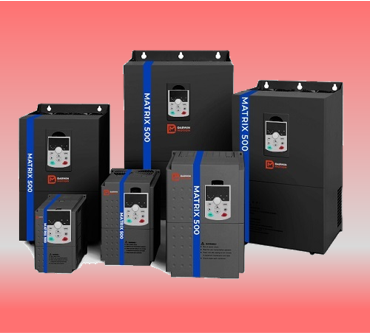Posted on 2nd Aug 2024
Types of VFD Drives: A Comprehensive Overview

Variable Frequency Drives (VFDs) are essential components in modern industrial systems, allowing for precise control of motor speed and torque. With a variety of ac drives available, each designed to meet different operational needs, selecting the right type can be crucial for optimizing performance and efficiency. This article explores the main types of VFD drives, their characteristics, and typical applications.
1. Volts-per-Hertz (V/f) Drives
Overview
Volts-per-Hertz (V/f) drives are the most basic type of VFDs. They operate on a straightforward principle: maintaining a constant ratio of voltage to frequency to control the motor's speed.
Characteristics
- Simplicity: V/f drives are easy to set up and configure.
- Cost-Effective: Generally more affordable compared to other types of VFDs.
- Limited Precision: They offer basic control and may not be suitable for applications requiring high precision.
Applications
- Pumps and Fans: Ideal for applications with constant torque requirements and where precise speed control is not critical.
- Basic Conveyors: Suitable for simple conveyor systems where basic speed control suffices.
2. Sensorless Vector Drives
Overview
Sensorless Vector Drives (SLVDs) provide more advanced control by estimating motor performance parameters without the need for physical sensors. They use algorithms to adjust the motor's speed and torque.
Characteristics
- Improved Performance: Offers better torque control and efficiency compared to V/f drives.
- No Sensors Required: Eliminates the need for physical feedback devices, reducing system complexity.
- Flexibility: Can handle varying load conditions effectively.
Applications
- Industrial Fans and Pumps: Useful for applications that require better control and efficiency than V/f drives can provide.
- Material Handling Systems: Beneficial in systems where varying loads and speeds are common.
3. Closed-Loop Vector Drives
Overview
Closed-Loop Vector Drives, also known as Flux Vector Drives, use feedback from physical sensors to precisely control the motor's speed and torque. They offer high performance and accuracy.
Characteristics
- High Precision: Provides accurate control of motor speed and torque.
- Feedback Mechanism: Uses encoders or resolvers to continuously monitor and adjust motor performance.
- Advanced Control: Suitable for demanding applications requiring precise control.
Applications
- Robotic Systems: Ideal for applications requiring precise speed and torque control.
- High-Performance Machinery: Used in equipment where accuracy and reliability are critical.
4. Dynamic Braking Drives
Overview
Dynamic Braking Drives incorporate braking resistors to dissipate excess energy when a motor is decelerating. This helps manage the energy generated during deceleration and prevents overvoltage conditions.
Characteristics
- Energy Management: Effectively manages energy during braking or rapid deceleration.
- Enhanced Safety: Prevents potential damage from overvoltage.
- Additional Components: Requires external braking resistors and circuitry.
Applications
- Cranes and Hoists: Used in systems where rapid stopping and energy management are crucial.
- Elevators: Helps in controlled deceleration and energy dissipation.
5. Regenerative Drives
Overview
Regenerative Drives capture and convert excess energy generated during braking or deceleration back into usable electrical energy. This energy can be returned to the power supply or stored for future use.
Characteristics
- Energy Efficiency: Reduces energy consumption by reusing excess energy.
- Cost Savings: Can lower overall energy costs and improve system efficiency.
- Complexity: Generally more complex and expensive due to additional components.
Applications
- High-Speed Elevators: Effective in applications where frequent stopping and starting occur.
- Dynamic Machinery: Useful in systems with significant energy recovery potential.
6. HVAC Drives
Overview
HVAC Drives are specifically designed for heating, ventilation, and air conditioning systems. They provide tailored control for fan and pump applications in HVAC systems.
Characteristics
- Optimized for HVAC: Designed with features tailored to HVAC applications, such as energy-saving modes and temperature controls.
- Integration: Often includes built-in functionalities for easy integration with HVAC systems.
- Efficiency: Focuses on improving energy efficiency and system performance.
Applications
- Building HVAC Systems: Ideal for controlling fans, pumps, and compressors in commercial and industrial HVAC systems.
- Air Handling Units: Used in systems requiring precise control over airflow and temperature.
Conclusion
Choosing the right type of Darwin Motion Variable Frequency Drive is essential for optimizing motor performance, energy efficiency, and operational reliability. From the basic Volts-per-Hertz drives to the sophisticated Closed-Loop Vector Drives and Regenerative Drives, each type has its specific strengths and applications. By understanding these different VFD drives and their characteristics, you can make informed decisions that enhance the performance and efficiency of your systems.
